Foreword by Matt Diggity:
Impressive. Knowledgeable. Underrated.
These are a few words that I would use to describe Brendan Tully.
B.T. is one of the first SEOs I ever met in Chiang Mai. He’s a veteran in the game and it shows. I mean… the man used to be commissioned by the Australian government to teach SEO.
The guy is good.
He’s a beast at E-commerce SEO, as you’re about to find out in this monster of a piece.
Introduction
It’s tough when Matt Diggity asks you to do a guest post. The guy sets a seriously high standard and regularly wows the SEO space putting out stuff that nobody is talking about or has talked about before publicly.
 When I first started in this game in the early 2000’s, I had zero idea what SEO was, but knew if I changed certain things on my site it would move up and down the SERPs in a particular way. We grew that biz to 7 figures in the mid 2000s and ultimately ended up in client work at some point in 2008.
When I first started in this game in the early 2000’s, I had zero idea what SEO was, but knew if I changed certain things on my site it would move up and down the SERPs in a particular way. We grew that biz to 7 figures in the mid 2000s and ultimately ended up in client work at some point in 2008.
Now through our services, one-on-one consulting, and in-person training workshops, we’ve worked with over 3000 different businesses or sites in some capacity, which has given me an awesome opportunity to try and test different approaches to determine what works and what actually moves the needle.
SEO has changed a lot since then – (strangely, stuffing a website footer with 200 suburbs and cities doesn’t seem to work anymore) with the SERP landscape changing week to week in some cases.
While the tactics and SERP layout change massively over time, I think it’s safe to say search is here for the long term – which brings me to the next point.
The more I speak with different SEOs and clients, the more ecommerce SEO in particular seems completely misunderstood. Because tactics change so rapidly, I’ve tried as much as possible in this article to stay away from short term tactics that have a use-by ****.
Instead, I focus on core fundamentals and strategies that are time-tested and supported by solid business, sales, and marketing principles – this article is not limited by just ecommerce SEO but instead is more broadly focused on ecommerce marketing and optimization – which is where you ultimately need to be playing if you want to stay competitive.

I’ve included action items as we work through this article – some are going to be totally obvious but are things that are regularly missed and some you may not have heard of before but have the potential to make a huge impact with a small amount of work.
I’ve also included an audio breakdown for most sections and a handful of videos too as some things are just easier explained that way. Please bear in mind that the bigger your site the chunkier the action items or todos, it wouldn’t be unreasonable to create 3 months of SEO work here for a 7 figure site.
Ideally, if I can have you walk away after digging into this article with one easy actionable tactic or quick win, one new broad SEO strategy you can apply to your site, or one principle or SEO foundation you weren’t aware of before – then I’ll be happy to say this article was a success.
If you have a question about a particular point here, post in the comments section and I’ll be happy to clarify for you.
Ecommerce vs Local SEO vs Affiliate SEO
Before we get into the meat and potatoes, let’s look at some of the key differences between ecommerce, local small business, and affiliate sites. There are some fundamental differences between them so let’s make sure we’re all on the same page.
Ecommerce Sites
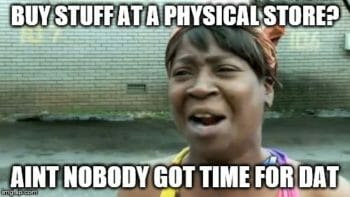 Typically an ecommerce site has a lot more pages than other types of sites, even if there’s only a handful of products. Most of these pages are auto-generated from the CMS, for example category, tag, cart, and checkout pages.
Typically an ecommerce site has a lot more pages than other types of sites, even if there’s only a handful of products. Most of these pages are auto-generated from the CMS, for example category, tag, cart, and checkout pages.
When you add tags, especially if you’re using a platform like Shopify, tons of pages are auto-generated off those tags and can create a canonical and keyword cannibalization mess. For bigger sites, cleaning this mess up can take some serious work but is a key component of getting the site to rank.
It’s easier to fix these issues on smaller ecommerce sites, but for bigger sites, it’s tough to handle auto-tags without automation or SEO techniques that work at scale.
Local & Affiliate Sites
Local SEO sites may offer 5 to 10 services or products. What that translates to are 5 to 10 target keywords or groups of keywords. Affiliate sites are targeting more keywords but generally still not as many as a mid size ecommerce site – for example, an ecom site that offers 100 products will typically have 100 or more target keyword groups.
It’s difficult to hand optimise a large number of keywords without using automation, templating, or SEO techniques that scale well when you’re dealing with a lot of pages and keywords.
SEO is not just backlinks
What I often see is when SEO’s do ecommerce SEO, they do it poorly. A lot of the time the default thinking is SEO=links but that’s not the case at all. Particularly with ecommerce sites, on-page SEO is vital and you need to get it nailed before chasing backlinks and internal links if you’re going to get serious SEO traction.
This should be common sense, but you’d be surprised how often we see well established ecommerce sites with glaring on-site issues. On page SEO should be your initial focus, especially for established ecommerce sites. Generally as an ecommerce SEO strategy, I handle backlinks last. Backlinks are usually the most expensive part of SEO compared to internal links but actually give you the least control and there’s often no direct correlation between a link and a result.
With on-page, there’s close to a 100% direct correlation between doing the work and getting results.
ACTION STEPS:
- Run a Semrush Site Audit across the site. I’ve tried dozens of onpage audit tools and right now Semrush is my favorite. It picks up a ton of things other ecommerce seo tools won’t and presents them in a way that it makes them easy to get fixed. Semrush will pickup many of the easy technical problems that are roadblocking rankings.
- Run the site through siteliner.com – this is a fantastic tool for uncovering content duplication and cannibalisation issues.
- Get a Littlewarden.com account setup. It’ll monitor your site on an ongoing basis and detect basic but critical onpage SEO problems that you wouldn’t otherwise notice until your rankings start to tank (shout out to Kevin from Bulk Buy Hosting for this reco)
A Note On Ecommerce Client SEO…
It can be tough working with smaller ecommerce sites as clients, brand new sites, or sites where the average sale size is small. Generally I’ll stay well away from these types of clients.
Generally when we do client SEO for ecommerce sites we never do SEO only.
It’s just too hard to get them fast results and if the client is not commercially ******, often the expectation is that you’ll make them a millionaire overnight
Whether I’m talking with a prospect about Adwords, SEO or something else one of the first questions I’ll ask if what is their budget. You can usually tell by the way they react what they’re comfortable spending and how commercially ****** they are. A common problem with client SEO is that expectation that SEO is free so that’s where the focus should be versus ads. But that’s the wrong way to look at it.
At least half of SERPs are paid ads now. If you don’t include paid traffic into your ecommerce SEO campaign strategy, you’ll have a hard time matching the competition.
Ecommerce SEO – The Current State of Play, SEO is not enough any more
Let’s talk about the current state of play with ecommerce SEO. As you’re well aware the SERP is constantly evolving which means your SEO approach MUST evolve otherwise it’s simply going to be less effective as time goes on.

SEO is becoming increasingly fragmented. 10 years ago, the #1 result on Google was the SEO search results. There might have been one or two adwords results at the top of the page but now the landscape has totally changed.
The #1 search result could mean many different things today:
- Regular paid adwords
- Google Shopping
- Google Maps
- Featured snippet (learn how to get it)
- Knowledge panel
- Paid Google Maps, which changes depending on location
- And more
To top it off, the SERP also changes based on device AND the location of that device at the time of the search. The traditional #1 result has been drowned out by ads and other SERP elements now.
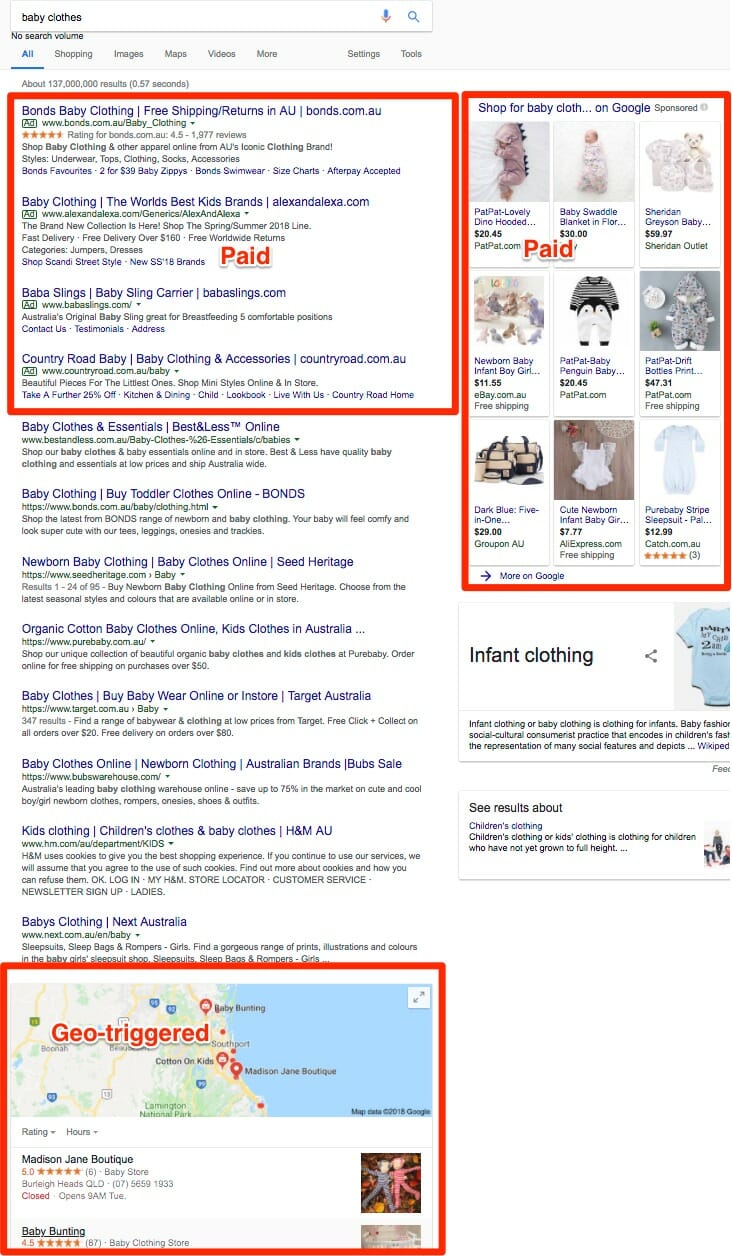
A lot of SEOs haven’t realised it yet:
Google is a paid search engine with some free results.
Google wants to sell ads, they don’t care about searchers. Flip your thinking and take advantage of it!
Google Shopping
It’s weird to say this in an SEO article but if you’re not running Google Shopping ads, you’re missing out.
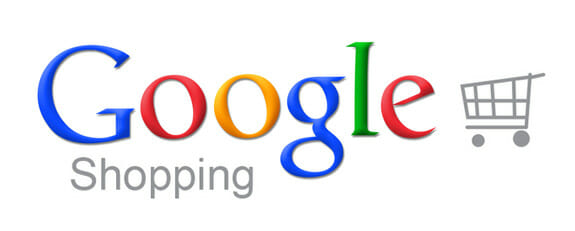
Google Shopping is one of the the cheapest and best converting traffic sources, you’d be crazy not to take advantage of it. Not only will it drive traffic and conversions, it’s the easiest way to shortcut your search engine optimization strategy by letting you:
- Figure out what keywords people are using
- Dig into their intent
- Find out which keywords are converting
Above all, keywords that convert are what we care about! We want to stay focused on quality keywords, not quantity.
As Google gets smarter, SEO gets slower and less predictable meaning we have less control over it. Getting results from an SEO campaign could easily take 3 to 6 months now.
On the other hand, Adwords is fast and we have total control. You can turn it on today and within 24 hours, our ads are up and running – after 1-2 days we’ll have immediate feedback on what’s happening in the SERP and what the search demand looks like.
It’s not just SEO that’s being fragmented, attention and search demand is too…
Google isn’t the only game in town any more either, you’ve got Facebook, Google Display Network, Amazon, Ebay, Etsy and a bunch of other shopping sites to contend with (who are all competing in the SERP too).
The bottom line is – focusing on search engine optimization is not enough any more. You need to be giving attention to paid traffic, platforms outside Google, conversion optimisation and the complete sales funnel.
A solid strategy includes having other traffic channels AND conversion optimisation. If you want to compete in this space in 2023 you have to be on top of it all.
Funnels…ugh, vomit
I’m so tired of hearing about funnels and funnel hackers, funnels are nothing new – all they’re really talking about is traffic and conversions with some paid traffic on the front end.

Above is a slide from a presentation I gave in 2012, which is just as relevant today as it was back then and one of my favourite frameworks or mental ****** – it frames the fundamentals behind a “funnel”.
At the core of it, ecommerce is really just a numbers game. Master the numbers and you master the game. Traditionally, SEOs have been focussed on the front end of this picture, rankings which then generated “leads”.
In 2023, you need to be across the other pieces of the puzzle in order to stay in the game, e.g.:
- Click through rate (CTR) (at all stages of the funnel)
- Conversion rate(s) (CONV)
- Cost of acquisition (CAC)
- Customer lifetime value (LTV)
Mastering these elements is not that difficult. It’s just looking at the sales process from end to end and analysing it each step of the way.
Action Step: If you’re not familiar with some of these elements or don’t have a strong grasp on some of these concepts the book 80/20 Sales and Marketing: The Definitive Guide to Working Less and Making More by Perry Marshall is a fantastic primer on these concepts and one I re-read regularly.
Ecommerce Keyword Research – You don’t sell keywords, you sell products & services
We do ecommerce keyword research a bit differently than other SEO’s. You don’t sell keywords, you sell products and services so we always start with the products and services the business wants to sell before touching keywords or ecommerce keyword research.
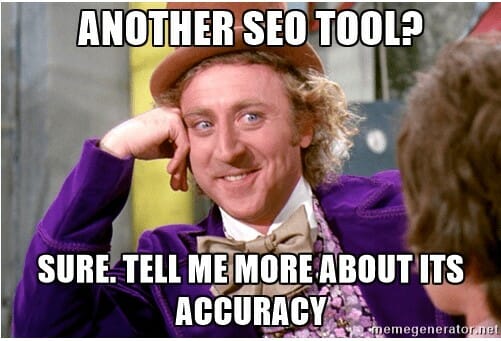
Here’s what our keyword targeting process looks like:
Step 1 – Define What You’re Selling
Start by making a list of all the products and services you’re selling. This can be both broad and specific. I suggest you use a spreadsheet to create the list, which shouldn’t be very time consuming. Set aside about a half hour for the list.
We have our local search engine optimization clients create a list as well and the search engine results pages can be very powerful. In short, it helps uncover simple SEO wins.
Broadly speaking from a search engine optimization perspective, each page can only really target one search term. That means for each product and service you’re selling and each keyword you’re targeting, you need a page of content for it.
Step 2 – Prioritise the List
After you’ve created a list of your products and services, prioritise them in order of importance. Whether that’s what you most want to sell or what’s most profitable – we’ll always have a time or resource constraint so it’s important we’ve prioritised the list so we can focus on the most important products and services we want to sell first.
Step 3 – Keyword Content Matching
Next, we then match each product or service to a page on the website. If a page doesn’t exist then we need to create one!
As a general approach, you should have one page for every one product or service. That’s because each page can only rank for 1 search term – at least it should only target one search term.
If you want to rank for a particular term, you need to dedicate a page to it.
It’s that simple and often overlooked and a super easy win.
Getting Accurate Keyword Data
Most keyword research tools give you data that is averages on top of averages. It’s useful but there are better tools we can leverage.
Google Webmaster Tools
If you have an existing website, you should have a lot of keyword data already from Google Webmaster Tools. A lot of people may be unaware of this, but there’s valuable information about your keywords under the search analytics menu like:
- Impression data
- Broad ranking data
- CTR (click through rate)
- Clicks from the SERP
Having this information tells you where you’re weak or strong. But most importantly, it tells you where you have opportunity. For example, if a keyword has a lot of impressions and you already have an average position of 5 or 8, it’s low hanging fruit and you need to grab it!
Going for these easy wins first means quick results. As I’ve mentioned, search engine optimization alone can be a long, slow process like running a marathon. Often, winning at SEO means finding this low hanging fruit and leveraging it.
This video will walk you through GWT search analytics:
Adwords
We also use Adwords to get valuable keyword data. A lot of SEO’s don’t realise there’s a huge amount of data inside Adwords that gives you detailed keyword data for the specific location you want to target.
The data is nearly 100% accurate and gives you incredible insight into what search demand and behaviour looks like. As a general rule of thumb, we never run an SEO campaign without an Adwords campaign right alongside it.
Using the data is a powerful way to refine our SEO campaigns – using Adwords data we can easily figure out what’s working from a sales perspective and attack those keywords. This is important as SEO is slower so a mistake made in targeting may not be revealed until months later.
Adwords shortcuts the process by:
- Uncovering buying terms
- Revealing the wonderful and unique ways people search for products
- Safeguarding against early mistakes in your SEO strategy
The bottom line is no one cares if you rank #1 in Google if you’re not selling. So find those high converting keywords first and really attack them to get increased checkouts and sales.
This video will walk you through where you can find the exact keyword data in Google Adwords:
Check Out What Your Competitors Are Doing
It’s also important to know what your competitors are doing. We use Ahrefs to see what our competitors rank for and which keywords they’re using – once we’ve mined GWT and Adwords as much as we can we then turn to Ahrefs.
Be careful of putting all your faith in this information though, because it’s possible your competitors have less idea what they’re doing than you do!
In Ahrefs you can also look at competitor advertising and see what they’re doing that may also benefit you.
So there you have it, a broad overview of our keyword strategy. The important thing is before you get too advanced with all this keyword research, make sure to sort out the baseline for your on-page content first.
To help you make sure your bases are covered, I go over the fundamentals of content marketing in the next section.
A Content Marketing Strategy That Intersects With SEO
You can’t get away with establishing an ecommerce store without a proper content marketing strategy for your business in today’s world. As I said already, you’re not selling keywords. You’re selling products and services so you need to make sure all the content on your ecommerce site offers value to the customer.
In order to provide the most relevant content, ask yourself these questions:
- What does the customer need to know before buying?
- What problems do my products or services solve for the customer?
- What does the customer need to know in order to get the most out of my products?
This is especially relevant for products that are over $100. Prospects have questions that need answers before they’ll commit to a purchasing decision and it’s your job to provide answers to those questions.
Here are some ideas on the type of content you can create:
The buyer’s guide I linked above is an example of something we did for a client. It gets lots of traffic, answers pre-buying questions for customers, improves conversion rate, and saves a lot of time. The client doesn’t have to waste time answering the same questions over and over anymore. They can simply link prospects to the useful buyer’s guide we’ve created.
 Not only will having a good content marketing strategy help you close more deals, it’ll positively affect your rank in SERPs and capture leads closer to the bottom of the sales funnel.
Not only will having a good content marketing strategy help you close more deals, it’ll positively affect your rank in SERPs and capture leads closer to the bottom of the sales funnel.
This is why it’s so important to use a QUALITY content development service and avoid wasting time and resources on spun content or low-quality blog articles. Even better if your content developers know a thing or two about search engine optimization. This will save you a huge amount of time and money in the long run, and it’s just smart business.
To make sure you have a good strategy in place, make sure to go through your actual sales process. A lot of clients aren’t aware of what their process is like for prospects, so walking them through is vital and offers a lot of insight.
One of my favourite books, called Insight Selling by Mike Schultz, talks about selling on the web.
A lot of Internet marketing tactics used online are old school pressure-based tactics. You’ll see a lot of time-based nonsense like tickers and countdowns. That’s garbage.
Short term methods will burn out your target market if used too aggressively. No one likes a pushy salesman. Instead of using outdated methods to push sales, take the time to figure out what problems your products or services solve and communicate that with your prospects.
By understanding how to sell customers, you’ll grasp their position in the sales journey and how to meet and match their intent better, specifically the intent behind certain keywords and search terms.
Overall, content marketing that intersects with SEO gives you the most powerful ecommerce strategy to sell better, rank higher, and get more traffic.

Forget about A/B testing, changing button colours, headlines, or anything else, most sites are missing the basics.
The easiest way to understand CRO (conversion rate optimisation) is figuring out what people want when they’re visiting your site and giving it to them (If you want in depth CRO, here’s an article where Matt and Kurt get into details about CRO for SEOs).
Here’s a simple checklist of the most basic CRO elements you need to have on your site.
#1 How are those contact details? Does your site have a phone number?
First off, do you have a phone number? Phone numbers will boost conversion rates on ecommerce sites even if nobody calls it.
Using a 1-800 free call number, makes your company look bigger and is a simple way to boost CTR in the SERPs – add your 1-800 number into the title tag and meta description so it shows up in the SERPs and you’ll see a solid CTR and organic traffic boost.
Does your menu include a link to your contact us page? If not, how will your customers contact you? Quite often this is completely missing OR disappears when the site renders on mobile devices. It’s helpful to include a tagline in the header too, answering these questions:
- Who are we?
- What do we do?
- Why should you choose us?
- How we can help
Having contact details and a tagline might sound simple or obvious. But they’re fundamental elements a lot of ecommerce sites are still missing.
#2 Check Your Site Across All Device Types
You most likely know what your page looks like on a PC. But how about a tablet? A smartphone? Make sure the site renders properly across all these devices.
The order in which elements render can easily get out of whack with footers before headers or main body content that just doesn’t make sense. One common problem is the Contact Us page is missing from the main menu on the desktop or disappears entirely on mobile. Make sure contact details are accessible at all times, and then optimise the Contact Us page.
#3 Contact Us Page Audit and Optimization
Remember, it’s not just new customers or prospects who are looking for your Contact page. Your contact us page is like a business card on steroids so make sure you’re making the most of it!

At a minimum the page should include:
- If you’re a physical retail business you want the address to be displayed (*if you want this publicly available) – generally we try and put this in the footer of the website too so it shows on all pages and is easy to find.
- An embedded Google Map or link to your business on Google Maps (as a sidenote, make sure when someone searches your business address and business on Google Maps that the right location appears!). Make sure you embed the Google Places map and not a generic map
- Your postal address (if different to your street address OR if you don’t have a street address)
- Phone number(s) – the fewer numbers the better. I’ve seen pages with 10+ contact phone numbers or phone numbers for every staff member which is just plain confusing.
- Your business name and company name (if your company name is different to your business name) – again often customers and suppliers will need this information from time to time and there may be some small search engine benefit to having this online.
- A Contact Us form – we prefer a contact form over an email address particularly if a lot of enquiries are coming through. Using a Contact Us form allows the request email to be structured better and gets all the information you require upfront.
- An email address (optional) – generally we prefer a Contact Us form only especially if you have multiple email addresses or departments. Using a form instead of listing 10 different addresses makes for a much cleaner, clearer user experience.
- Is your Contact Us form working?!!!!
If you have a form on your site is it actually working? When you hit Submit on the form does it actually work correctly and does somebody in your company get the email? - What happens to enquiries if there is an email problem?
This is something that is almost always overlooked. If you’re having email problems and an enquiry sent through the form on your website gets blocked or lost what happens to that enquiry? Does it simply disappear into the ether - Who is handling the enquiries and how do you know they’re handling enquiries appropriately?
- Reception and admin staff aren’t salespeople and generally they’re the wrong person to be handling sales enquiries – sales enquiries should go to sales or customer service staff. This is one of the reasons why we prefer to use a contact form instead of an email address on the Contact Us page as it allows us to add a drop-down box for the type of enquiry and funnel different enquiry types to the appropriate email address.
#4 Abandoned Carts
Abandoned cart emails trigger when a prospect adds stuff to their online shopping cart but for whatever reason, they leave without checking out. The email is a chance for you to send a gentle reminder to finish what they started. Unfortunately, most abandoned cart emails are done incorrectly and if the same approach was used in a physical retail store would look something like this.
A person walks into a retail store and picks up a bunch of products. They walk around for awhile before they leave without purchasing anything. Once outside, the salesman chases them down the street screaming discounts, going lower and lower with the prices until the customer feels pushed into buying something or gets totally pissed off, fired up and tells 3 of their friends about this horrible experience.
It’s crazy, but that’s how most cart abandonment email sequences are done.
Here’s the link to the basic abandoned cart email template that we use that treats the prospect like an actual perspective that will help uncover the things that went wrong during the buying process so that you can fix the problems to ensure they never happen again.
More on email marketing tactics this podcast:
#5 Offer Livechat
Live chat tools are great for addressing customer inquiries right away. We include live-chat tools regularly, especially when working with clients. Drift is an excellent live-chat tool that is super user friendly and has a bunch of other fantastic marketing features.
Using proactive chat messages is a powerful way to engage with customers based on what they’ve done, where they came from, and other important criteria.
Drift offers a good customer interface, making it easy to use. Best of all, it gives you an option to try the tool out for free so you can test it out before committing.
Remarketing is the process of positioning an ad in front of previous visitors to your website while they’re browsing elsewhere on the web. It’s also key to conversions.
Both Facebook Ads and Google Display Network (GDN) remarketing are cost-effective tools to get in front of the right audience and remind them to purchase.
Facebook Ads are getting more expensive as more and more businesses use them so you definitely need to look into GDN for remarketing. Personally, I use both to cover my bases since they show up in different places.
#7 Take Photography Seriously
Using high-quality images or photos is so important for the performance of your webpage. You should never use DIY photography.
We go in-depth on the importance of photography in the next section but here’s a podcast on photography with Matt Reed from Perth Product Photography that goes into ecommerce photography in more detail.
#8 Website Speed is Key!
We’ll talk about this in a separate section below – site speed is a key part of ecommerce conversion optimization!
#9 Go Through Your Own Checkout Regularly
Super simple but very often forgotten about, go through your own checkout regularly. Buy something, make sure the process is seamless, works without errors and the emails the system sends make sense! Also make sure your abandoned cart emails are actually triggering properly.
Your website is not a price list – Fatten Up Your Site & Make Sure You Sell The Customer

In today’s day and age, you need to know how to sell the customer. Many sites I see are nothing more than a glorified price list!
Today’s customers are so much more sophisticated and have so many more options than they did merely a few years ago. To make a genuine connection with them, you need to know HOW to sell.
In this section, we’ll focus on the first principal: How to address prospects’ needs or wants. To do that, you need to include the right content. Here’s a closer look at what that means.
What is the “Right” Strategic Content That Will Help Drive Sales?
Established ecommerce websites needs to have relevant content on their pages that offers value to the customer. After all, what is there to separate you from the next guy selling the same thing?
In short, simply throwing up information that doesn’t target the prospects’ wants or needs isn’t going to do much for you.
Here are some common problems I see:
- Having too little content on a page
- Too many keywords on one page
- Product list with manufacturer’s descriptions
- Category pages with no text, just a list of products
- Having low quality content that looks like a robot wrote it
If your site is just a bunch of random product pages with prices and descriptions, you’ll ultimately struggle to rank. If somehow you do rank, you’ll struggle to convert visitors.
That’s why paying attention to your content is key.
First off, when you’re creating content, pay attention to keyword content matching. You want ONE keyword target per page. One thing to understand about your content on an ecommerce site is that every page is a landing page.
And if you’re hiring a high-quality content provider to create multiple pages – make sure you specify which keyword is for which page.
Every page is potentially the first thing the customer sees – the homepage, category pages, product pages. All can be a landing page, which means every page needs valuable content that answers questions effectively.
And by valuable content, I don’t mean a bunch of text that serves no purpose either. There are strategic elements you should cover on your webpage.
Here’s a basic checklist of the content you need to include on the pages of your site.
1) Use High Quality Videos and Photos

Anytime you’re putting photos or videos on your ecommerce site, make sure they’re high-quality. If you’re selling your own products, having a video for every product can work well. Using professional images is important because that’s all the customer has to rely on and it can affect your conversion rate.
Here’s a podcast called Is Photography the Silver Bullet? where I talk to my friend and business partner, Matt Reed, who is a professional photographer and runs a studio. He covers how customers buy for both emotional and logical reasons.
High-quality photos that show the product in situations with fine detail taps into emotional buying. Logical reasons are things like product features, price, and free shipping. You need BOTH to make the sale.
2) Offer Helpful Information like User Manuals
Lots of sites we come across have products pages that have simply copied manufacturer’s descriptions. This strategy is not good enough and does little to help with your conversions.
It’s your job to stay on top of the message you send. Don’t leave it up to the manufacturer to sell for you. One thing you CAN do is go on the manufacturer’s site and download their videos. Put them on your own YouTube channel or embed them on your site.
For videos with a lot of talking, use VEED Transcription tool or Rev (what we use) to easily get transcripts made. Add the transcript to the video on YouTube, which will help rank the video and your page. If it’s a long video, convert the transcript to a PDF customers can download.
If there are product specifications or user manuals, offer a PDF the customer can download directly from your site. That way, they have all the information they’ll need without having to look elsewhere.
3) Put Text on the Page
It’s important to have actual content on your page to help you rank higher. Often times we see clients who may have a lot of details in the photos, but no text. This is especially relevant with nutritional or supplement sites.
Instead of simply using photos with text, convert the information in photos to text on the page. Not only is it better for SERPs, it’s easier for the customer to read. Other content elements that help put text on-page include:
- Subscription details
- Cancellation terms
- Shipping policies
- Charges for shipping
- Anything else your customer may have questions about
This type of content is vital in helping the customer make a purchasing decision. Include it on every product page to help flesh out your content and rank higher.
4) Clarify Acceptable Forms of Payment

Let prospects know what forms of payment you accept on your payment page! Offering this information can make or break a sale. Consider using the following:
It might be obvious to you what payment methods you accept but unless you’ve explicitly told the visitor they don’t know.
Proving the obvious 1-2-3-4 steps, this is what payment methods we accept, how shipping works and how you order products and so forth, in almost every instance, will improve your conversion rate.
5) Use a Template to Save Time
As you probably know, longer pages tend to rank better than shorter pages so adding details to each page is helpful. Some of the information that needs to be on multiple pages can be templated (like payment or shipping information).
Have a VA add templated information on every page or edit the template in your CMS to include it.
One thing to be careful of, especially with nutritional products, is including the ingredients list. Occasionally, that will break things like Google Shopping as they’re very sensitive to that kind of information.
6) Check What Your Competition is Doing
Looking at top-ranking competitor pages can give you a good idea of what you need to include to flesh out your content. Check out the top ranking competitors or ones paying for Adwords.
There are also tools that tell you what keywords are missing on the page and what content competitors have that you don’t. Vectorfy and the Cognitive SEO keyword tool (https://keywords.cognitiveseo.com/) are great for getting insight into what content gaps your page has and filling those.
7) Answer Pre-Buying Questions
There are questions your customer wants answered before they’ll commit to purchasing, especially if the product is technical or the offer is complex. People need answers.
It’s your job to offer that information on your page, whether it’s with an embedded YouTube video, Buyer’s Guide, or something else.
NEVER direct the customer to a third party to get information. Simply linking leads to someone else’s YouTube video could mean you’ve lost that customer to the blackhole of YouTube.
Here’s an example of a comprehensive buyers guide on one of our sites as an example.
We built this not based on keywords, but the most common questions customers asked before buying – surprise surprise it pushed conversions through the roof.
8) Sell The Customer
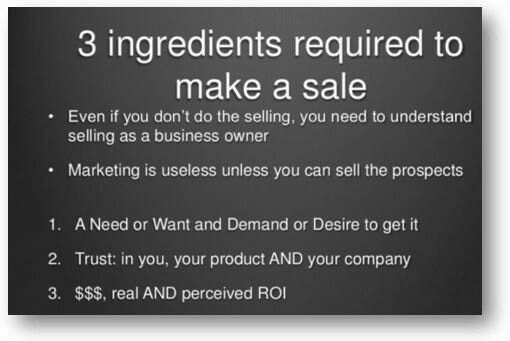
This is another slide from that presentation in 2012 (thanks 2012 Brendan). I still use these 3 main principles as part of my sales checklist today. Whenever I’m working with a site or talking directly with a customer, I use this framework or checklist to make sure we’re pushing the customer further along the sales funnel at each contact point.
There are 3 key elements a prospect needs in order to make a purchase:
- A need or want and the desire to get it (the want may be what the product or service does or provides)
- Trust in you – your products, services, and company
- Money – both real and perceived ROI (An easy way to **** this is to offer finance or payment plan options)
Here’s a short audio to explain this model:
Your content and your site needs check these three boxes in order to make a sale. The better you can check the box for each one, the higher your conversion rate will be.
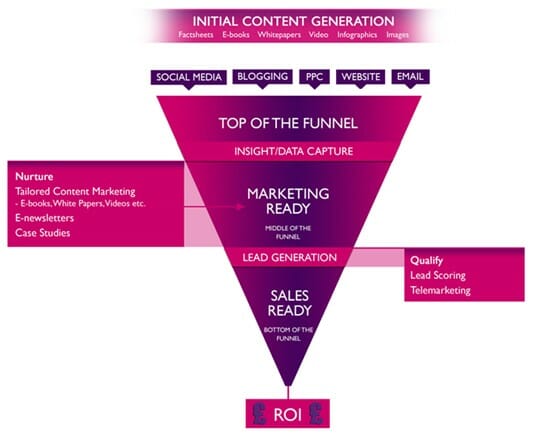
Understanding where your prospects and target market are currently placed in relation to your sales funnel is key to marketing to them effectively. People behave depending on whether they’re at the top of funnel, middle or bottom of funnel. Search engine optimization is most successful when it targets people at the bottom and middle/bottom of the funnel. Generally, Facebook ads and Google Display Network are better for people sitting at the top of funnel or middle/top of funnel.
If you’re not great at selling, these resources are some of my favorites and will help a ton:
Be a real business (aka BRAND) – Boost Conversions, Get Links, Rank Higher AND Get “Point of Difference”
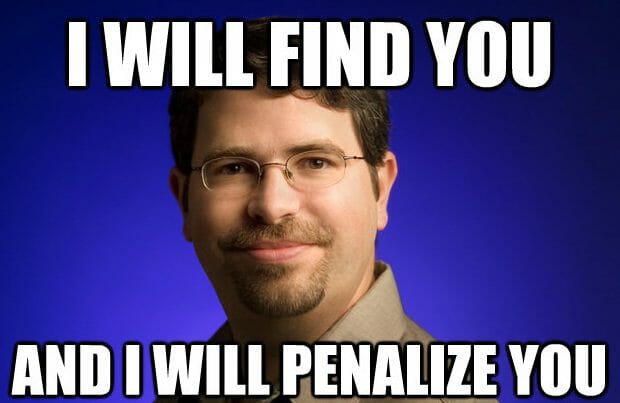
“Brand” is quite an abstract concept so more easily explained in the audio but in a nutshell, in a world of faceless dropshipping e commerce websites and FBA copycat knock-offs, brand is becoming increasingly important.
The good news is, Google wants to rank businesses and brands, not faceless websites. Since it’s a huge part of Google’s algorithm, there’s no need to fight it. It makes sense then to be a brand. Here’s more about how clear and strong branding has a powerful effect on helping you differentiate.
Communicate Clearly What Your Brand Stands For
Before ecommerce started booming, customers would go to a store with a physical location if they wanted to test out a product or ask questions. In the ecommerce business, all that has moved online so you’re working with a different landscape.
Often times in the search engine optimization space, there’s confusion that a website is the business but the truth is actually the other way around. A business has a website, even if the business is run entirely online.
For example, you don’t own a website selling guitars. You own a guitar shop that sells online. It’s subtle mental framing but important to distinguish. When you change your mindset, you’ll be better equipped to answer questions like:
- What does the business do?
- What does it stand for?

When you are clear on what your products and services stand for, you’re ready to distinguish your brand from the copycats and competitors on the market. Having a brand that stands for something helps conversion rates straight away by offering customers a solid reason to purchase from you.
Just think – people are slapping up drop shipping sites left and right. There are countless copycat products on FBA. As soon as a product goes live, you’ve got 10 copycats popping up. So why is having a brand so important?
It differentiates you and your business. A brand gets your customer to come back so you can get repeat conversions because they know, like, and trust you. Maybe it’s the quality of your product, timeliness of your customer service or something else.
Whatever it is, figure it out and clearly communicate that with your customers. Over time, they’ll come to rely on your brand and really feel the difference versus purchasing from someone else. Of course, there are countless other ways strong branding can positively affect your business. Here’s a look at what it can do for SEO.
Guard Your Brand Terms and Use Them to Clobber the Competition
Your brand is central to your ecommerce business and over time, it helps determine your reputation. There’s a reason products like Apple can charge above and beyond what competitors charge for similar products.
If you’ve worked hard to develop a good reputation, you need to pay attention to your brand terms in search engines. For most businesses, brand terms are the most valuable, highest converting, and easiest to rank for.
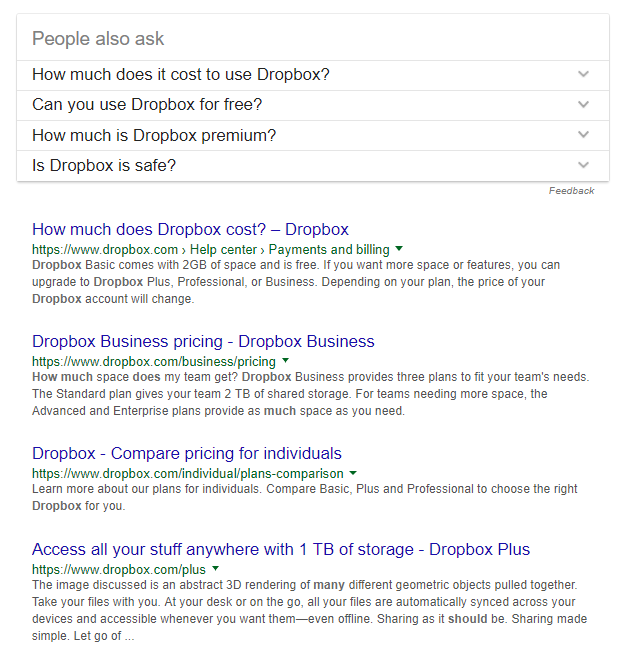
In the context of SEO, having a proper brand gives us easier links too, regardless of the type of site or client you are. The first thing we focus on are brand search terms and what the SERP results look like for those brand terms.
Brand terms are so powerful that half the affiliate SEO industry thrives on the fact little attention is paid to brand SERPs. In extreme cases, SEO’s can outrank the actual business website!
So you need to watch the SERP like a hawk for your brand terms. This is especially true for 7 or 8 figure businesses. Prospects who are searching for your brand WANT your product or are already halfway through the buyer’s cycle and want more information from you.
The first place to look for brand search terms is in Google Webmaster Tools. Along with data on how often people are searching your brand, you’ll also see the weird and wonderful questions attached to the search terms people are using.
A common one is by country, especially for US-centric brands. People are looking for the brand where they live, which is an easy one to cater to. Just create a page for the country where people are looking for you and simply include something like:
- Here are our local dealers, or
- Yes, we ship worldwide
The bottom line is you need to know what’s going on with your brand terms in search engines and take care of them. If you discover common questions popping up in search queries, then create content to answer those questions for customers.
If you don’t have that content, chances are someone else will create it and you’ll miss out. Along with protecting your brand terms, there are other ways to gain more real estate in the SERP. Next let’s look at how local SEO techniques apply to your ecommerce business.
Leverage Local SEO Techniques to Edge Out Competitors in the SERP
By being a “real business” with a name, address and phone number (NAP), we can leverage local SEO techniques for our ecommerce site just like you can for affiliate sites. Once you have your NAP on your site you can easily go a grab those low hanging fruit likes like:
Maps give you free links so you’d be crazy not to do it. Once you’re on there, you can go and get local citations as well. Citations are really cheap links that generally cost $2-3 per link.
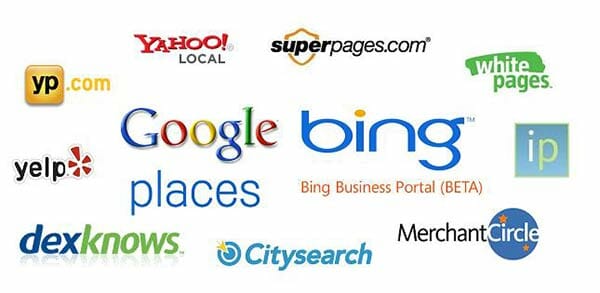
Most businesses have 70-100 quality citations that are available, dirt cheap, and stick around for the long-term. We usually use BrightLocal but Web 2.0 Ranker and SEO Butler are also good lower-cost options for getting local citations.
In general, our best performing ecommerce clients are blended local and ecommerce. The other benefit is they’ll rank higher on Maps and the listing starts to trigger for search terms in their local geographic area – suburb, city, state, country and often internationally too.
Using local SEO techniques is a cheap and easy way to get solid backlinks, even if you’re not really a local business by the classic definition.
You may have seen it when a maps listing shows up in the knowledge pane taking up half the search result. That means managing the Maps listing aggressively can drown out SERP competitors for brand search terms and help protect your real estate in the SERP.
The bottom line is you can get on Maps using local SEO techniques, but first you need proper contact details.
Other Easy Links…
Social properties, 2nd and 3rd tier sites are super easy ways to grab links and push social shares are the web, make sure you grab:
- YouTube, Vimeo and DailyMotion (and upload your videos to all three AND your Facebook page)
- Twitter (link to Facebook if not natively posting)
- LinkedIn (link to Facebook if not natively posting)
- Pinterest (pin all your products and categories)
Do some digging in the SERP and make sure you claim all the social properties that appear for competitors and your target terms too. Often you’ll uncover easy link opportunities like Ebay buyers guides. We also use Knowem.com for pillow links too which makes this process nice and easy.
Once you start posting regularly on your social properties, you’ll rank higher and drown out competitors trying to rank for your brand terms.
Make sure you use automation where possible. For example, Twitter links to Facebook and Youtube so posting on one automatically posts on the others.

A lot of these platforms are 2nd and 3rd tier sites that don’t get a huge social following, but can still give a lot of value in terms of SERP real estate and pushing links and content on the web. Setup social media sharing with an IFTTT network or use Zapier.
Remember, where content marketing and SEO intersect is where you’ll get the most gains. So make sure not to ignore what’s happening across social media platforms as it has a powerful effect on rankings and can give you valuable links.
Branding Must-Do’s
So far I’ve given you a lot of information in terms of branding so let’s go over the steps again.
First, you need to stop looking at your business as a website, but a business with a website. Once you flip your thinking along those lines, you’ll find it easier to develop a strong branding strategy.
Make sure you have a company name, address, and phone number in place. Appearing as a “real” business lets you take advantage of local SEO techniques even if you’re not local by the classic definition.
Then, you need to claim socials properties across the web. Generally when we approach brand property and free links, we do the top layer – things like Google, Bing, and Apple Maps – manually.
Then we use tools and services BrightLocal and Knowem to do the cheaper links.
Of course, there may be a subset of the lower tier stuff that needs some manual work to get them to rank. But wherever possible – input by hand the biggest properties and pay a service or use automation to handle the less valuable ones.
The bottom line is once you have a solid strategy in place, you’ll find easy ways to gain traffic sources, get more links, and see the gaps in your SEO strategy. One of those gaps might be whether or not you have a review funnel in place.
Reviews and Reputation Matter – Get a Review Funnel in Place
Especially for the ecommerce space, reviews are a fundamental part of gaining customer trust so they’ll feel good purchasing from you. Let’s go back and look at the list of the 3 things people need before they’ll purchase:
- A need or want and the desire to get it
- Trust in you – your products, services, and company
- Money – Both real and perceived ROI
Positive reviews are the best and the fastest way to build trust with prospects about your company and what you’re selling. Not only are they good for your reputation, reviews boost SEO (especially local) and improve CTR for both organic and adwords searches.
As you know, better CTR improves your rank. So how do you tap into the powerful effects of customer reviews? Here are the steps for leveraging reviews to benefit your ecommerce business.
1) Fix Bad Reviews First

If you’re getting bad reviews at the moment, it’s the first thing you need to address before trying to get more reviews. The web amplifies sentiment. If you’re getting bad reviews it usually means something is the business is bad or broken, no amount of SEO or marketing can fix those fundamental problems.
Before you consider setting a review funnel in place, take an honest look at where your business is right now. If it’s an ordinary business, marketing online is probably going to make it look more ordinary. But if it’s doing well, then good marketing will make it look even better.
Don’t damage your business by solidifying your reputation with core fundamental problems. Fix the root cause of the bad reviews first before chasing more reviews.
2) Set up a Review Funnel

Every ecommerce business needs a review funnel to get valuable testimonials on autopilot. Like every other point I’ve made in this article, most businesses do this poorly.
Most businesses get product reviews incorrectly and end up spamming their customers. For example, they’ll ask on a scale of 0 to 10, how likely are you to refer your friend to this product? It’s not an effective way to get good reviews.
The strategy we use has generated thousands of reviews and is easy to do. About 14-21 days after the order ships or when you expect the customer has received the product, send an automated email with a subject like, “Did you receive the product you ordered?”
Basically you’re just following up to see if it arrived on time and offering an opportunity for the customer to let you know if they’re happy. It’s also a great way to let them tell you about problems before they throw up a negative review.
The best kinds of emails are written in a personal way, like you’re messaging a friend who ordered from your online store. They should follow a natural progression like, “Hey, did you get your order? Is it in one piece? What did you think about it?” Here’s a review template you can copy and paste that works really well.
After you know they’ve received it, you can ask for feedback about what they like or if there’s something you can improve. Only then should you ask for a review on the product.
Direct customers to a product page, Google Maps, Facebook, or wherever you want to push the reviews. Sometimes you can include links to every platform and if they’re really happy, they’ll put up reviews everywhere. But the most important part is making sure they’re happy first.
Automating the review process gets you testimonials on autopilot but also uncovers potential issues with the business. You need to know about these problems to protect the quality of your reviews and star ratings.
Once you’ve gotten a pattern of getting good reviews (good job!), here’s what you need to do.
Here is the exact template we’ve used to generate 1000s of reviews across the web.
3) Get the Review Snippet to Show Up in SERPs
Reviews are an important part of the ecommerce puzzle, especially for SEO. By getting the reviews snippet to show up in the meta descriptions in SERPs, you can attract more clicks – especially if you have more stars than a competitor who ranks higher.
If your review rating is strong but you don’t rank #1, you can get more traffic than the first listing if they don’t have reviews or stars. Leverage reviews on platforms like:
- Google Maps
- Adwords
- Google Shopping
Use these review listings to fill up the SERP, especially to brand search terms. Bigger brands that have competitors in the SERP for brand terms need to pay particular attention to getting the review snippet to show up in searches.
In some cases with an older CMS or theme, there may be problems with the markup. Make sure the review markup is even there on your product pages so the review snippet has an opportunity to display in the search engine results. An easy way to test if your page is verified with valid markups is with the Google Rich Snippet Tester.
This video walks you through the basics of the Google Rich Snippet Tester and takes a quick look at schema markup for reviews:
4) Collect Reviews in One Central Location
Reviews enhance your company’s reputation and gets customers to trust in your business, the products or services they’re buying, and the results they expect to get. Positive reviews help you get more SEO traffic and help you sell more.
More trust with a customer can even beat out price competition and other basic objections a customer might have. One great way to showcase your best testimonials is to collect them on your main customer reviews page.
We use Mailchimp or Zapier most often but most ecommerce systems have review funnels built-in. Here’s a link to one example of how we used review plugins to create a main reviews page for a client.
Some CMS’s allow you to embed all reviews. The other option you have is to use a VA to go through all the reviews to make sure they’re relevant and manually put them on your page.
Having someone to look over the reviews before posting is important. Often times, people will put customer service requests in reviews and they don’t belong there so you want to have a process in place to catch those.
The bottom line is reviews are important, but online marketing amplifies sentiment so you need to make sure to fix bad reviews first.
If your business is good, then it’s time to set up a review funnel to get testimonials automatically so you’re not wasting time doing it by hand. And remember, don’t ask for reviews without offering value to the customer first.
While the tactics and SERP layout change massively over time, I think it’s safe to say search is here for the long term – which brings me to the next point.
On-Page SEO for Ecommerce
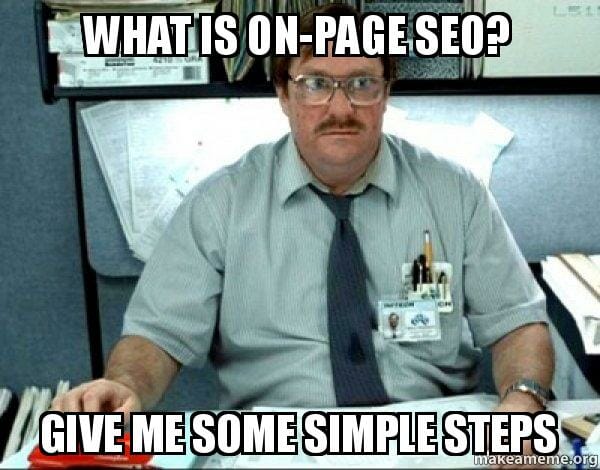
I won’t go into too much detail here other than to reiterate that onpage is key for ecommerce SEO, it’s the cost of entry to rankings, no matter how many backlinks and internal links you have, if your on-page SEO sucks you’ll be spinning your wheels.
Matt’s Onpage SEO guide is a great starting point for this.
A few things I’d add that are ecommerce specific:
- The Semrush SEO audit tool is awesome and will uncover problems you’d otherwise miss
- The Google site:domain.com search is super powerful
- Noindex pages that shouldn’t be there
- Fix canonical issues
- Get rid of pagination, pagination is SEO and conversion death
These two modules from The Lab explain the site:domain.com search and pagination in more detail:
CTR Secrets
One thing we’re fanatical about that gets almost zero attention in the online marketing space outside Adwords is CTR (click through rate)
It’s well known in the Adwords world that something as simple as swapping the top and bottom lines of your Adwords ad copy around can take CTR from 1% to 2% – that’s a 100% improvement, or in other words, DOUBLE the traffic from the same ad.
I actually hesitated about including this section because we’re probably going to create a product at some point this year that focuses specifically on CTR optimisation – it’s insanely powerful.
Outside of Adwords & PPC, CTR is merely a footnote, which is really weird.
Most SEOs are focussed solely on rankings. There’s an assumption that if I’m “number 1 in Google” then I get all the traffic. That’s completely wrong.
Let’s apply some basic logic here:
Organic traffic = rankings AND a click
So if you’re focussed solely on rankings, you miss 50% of the total organic traffic puzzle.
The same applies with social.
Again the assumption is more shares = more clicks or traffic
Wrong again.
Social traffic = shares AND a click
So again, if you’re focussed solely on shares on social and don’t give CTR any focus you’re missing a huge part of the social traffic puzzle.
A real world example:
This is one of my favorite examples of real world results from a focus on CTR for organic search.
The client is in the financial services market serving a niche audience worldwide. They ranked pretty well for their target terms, had a content marketing strategy that was well dialled in, had a podcast, had been on podcasts, had 100+ Youtube videos – they were doing everything right.
The asked us to do an SEO review of their site. One of the things we recommended was a rewrite of their meta description across the site because they were pretty ordinary from a CTR perspective.
They were skeptical.
So, we proposed as test – we’d rewrite the meta descriptions for the top 20 pages and top 20 blog articles ranked by traffic/pageviews.
Nothing else was done to the site apart during that time – here’s what happened to their organic traffic:
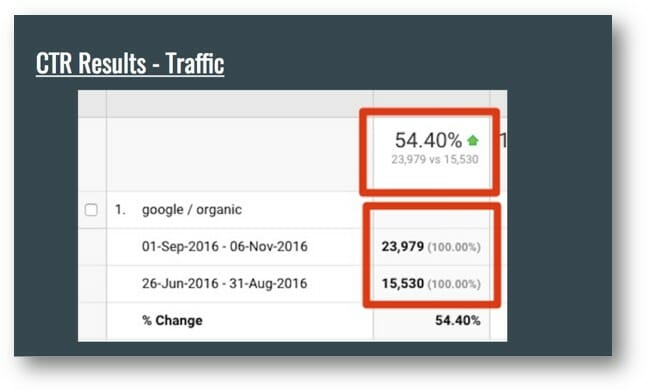
A 50% increase in organic traffic with no extra links, solely meta description optimization.
After this, their rank started to do this:
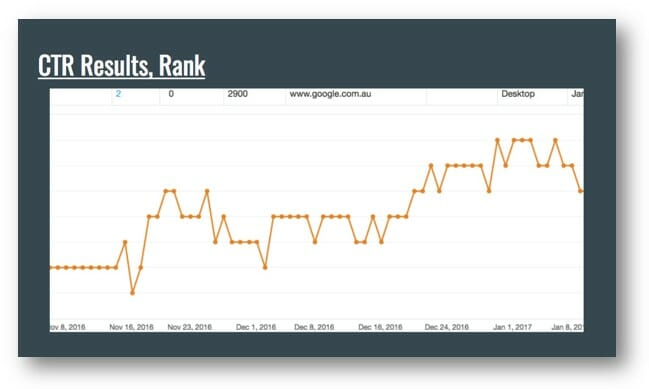
You have to agree, a pretty amazing result. This is not an extreme example – we see similar results across all clients, local SEO, ecommerce sites, info product sites, affiliate sites.
How to optimize for organic or SEO CTR
- Every single page on your site should be unique therefore every meta description should be unique
- Used power words, FREE, FAST, Insured – use ALL CAPS for important words. Use capitalisation at the start of important words. Highlight power words like “FREE”, “HUGE” or “MASSIVE” with all caps – Google doesn’t let you do this in Adwords but you can in organic search!
- Sell the sizzle! Treat the meta description like a mini sales letter with the goal of getting the click.
- Use all available space for the meta description where possible but don’t make it so long that it won’t fit in the field.
- Don’t duplicate words, use the ampersand symbol instead of “and”. Generally speaking having the product name or a variation of the product name in the meta description will help CTR.
- Leverage your edge over the competition by including a phone number in your meta description if appropriate. If your business isn’t pure ecommerce and you offer an online booking functionality where many competitors don’t include this too.
- Use Google Webmaster Tools “Search Analytics” report to dig deeper into your organic CTR and CTR opportunities
- Some CMSes like Shopify and WordPress with the Yoast SEO plugin will show you a snippet preview by default, others like Magento don’t so we built our own tool: https://www.thesearchengineshop.com/title-tag-meta-description-writer/
Example: Before
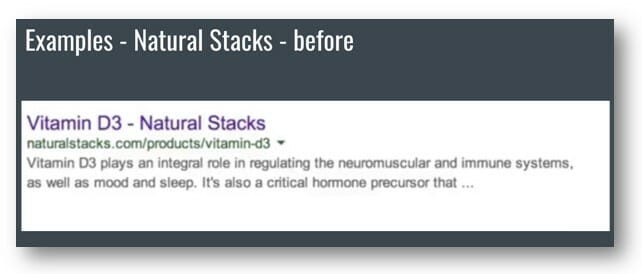
Example: After
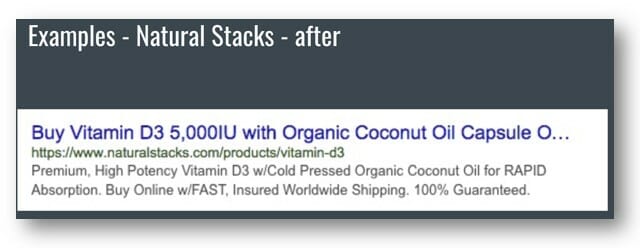
CTR and the Socials….
Probably half the websites we work on have problems with their open graph tags or are just plain completely missing them!
Facebook provide this tool which will show you exactly how your site looks when shared on Facebook and any other platform that uses open graph tags – Slack, FB Messenger, What’s App, Twitter, Skype and so forth.
Check it out here: https://developers.facebook.com/tools/debug/
Social CTR rules:
1) Make sure at a minimum, you have a default open graph image has been designed specifically for CTR, set SITEWIDE.
Here’s an example of what I’m talking about:

2) If you’re using WordPress then the Yoast SEO plugin is hands down the best SEO plugin to use. For your important pages make sure they have separately written Facebook titles and descriptions AND custom created open graph images.,
3) Make sure your CMS is actually inserting open graph tags! Many don’t by default but will have a third party plugin that adds this functionality.
4) f you’re starting from scratch, use a tool like Buzzsumo so see your best content by shares and work through those.
5) Canva.com is a great tool to use to create clean, high quality looking open graph images.
Website speed counts
I could talk all day on site speed, there’s so many opinions online along with a constant stream of posts on Facebook Groups about pagespeed insights, you’ve no doubt seem them.
Speed is definitely important. IMO most SEOs wrong have the wrong mindset – fast speed doesn’t get conversions and rankings, slow speed loses them, its a negative deliverable.
This is our approach to speed in a nutshell:
Don’t waste your time on pagespeed insights, it’s old, it’s dumb, it’s missing a bunch of key things, instead aim for under 1 second in tools.pingdom.com, under 1 second is where the page loads feel instant.
Pagespeed insights is more focussed on render speed which isn’t as big a win with a modern theme. Also, load the site on your smartphone, regardless of what speed tools say, if the site feels slow to load, it’s slow to load.
1) Your hosting ideally has HTTP2 support, you can test here: https://tools.keycdn.com/http2-test. HTTP2 needs https to work, here’s a speed comparison or http2 vs http1.1: https://imagekit.io/demo/http2-vs-http1
Putting Cloudflare in front of your host, even a cloud CMS like Bigcommerce or Shopify will give it HTTP2 support if it doesn’t already have it.

2) Use Cloudflare for DNS hosting, it’s the fastest DNS host in the world, see DNSperf, the CDN also has the most PoPs worldwide so will be the fastest (pagespeed insights doesn’t check DNS hosting speed).
3) If you’re on WordPress, use PHP7 instead of php5.6, v7 is 2-3x faster which equates to ~30% site speed improvement, more on Woocommerce (pagespeed insights can’t check your php version).
4) Smush images with WP Smush it or equivalent
Pagespeed insights says use lossy compression (less file size, less quality), in a marketing first/commercial first environment we don’t want to do that…we use lossless compression (less file size, same quality). As we’ve already talked about photography is probably the easiest way to boost conversion for local seo/SMB/ecommerce.
Regardless of what you think, lossy compression is bad and does impact the the quality of images therefore the quality of your marketing).
Cloudinary has a fantastic image audit tool that will tell how much further images can be compressed using a cloud based image optimization service like Cloudinary or the paid version of Cloudflare.
5) Use caching if your host doesnt have. W3 total cache is the fastest caching plugin but you need to know how to wield it, WP Rocket is not as fast but is more diyable (pagespeed insights won’t tell you this).
6) Disable any plugins and tracking code you’re not using.
7) Don’t use any lazy loads or transition effects, softloads, fadeins or whatever or fancy bullshit your theme has, it adds delays into the site render so the perceived load is slower.
8) Piff off any banners you have, banners=conversion death.
Note from Matt: Brendan is being too polite to sell here, but if you’re having speed issues, check out his service at The Search Engine Shop. I’ve used them. They’re awesome.
If you are using Magento, then these hosting services will be helpful.
Putting It Into Practice
It’s easy to read through a giant list of tips and tactics you “should” implement, but most people don’t. That’s why putting even just a few of these techniques into action will put you ahead of 90% of your competition.
It’s clear that most eCommerce SEO is misunderstood, and remains a mystery to most online marketers. Since the playing field changes so rapidly, you can use these tactics to focus on the big wins first, rather than diving into short-term techniques that will need to be changed down the road.
By focusing on core fundamentals and strategies that are time-tested and supported by solid business, sales, and marketing principles – you’ll excel in your eCommerce SEO far more than if you worry about small “trendy” techniques.
When in doubt – just start with one.
One single core tactic to implement in your SEO strategies. And if you can walk away from this article with one actionable tactic or principle, then you can consider the time you spent reading this guide a valuable investment.

